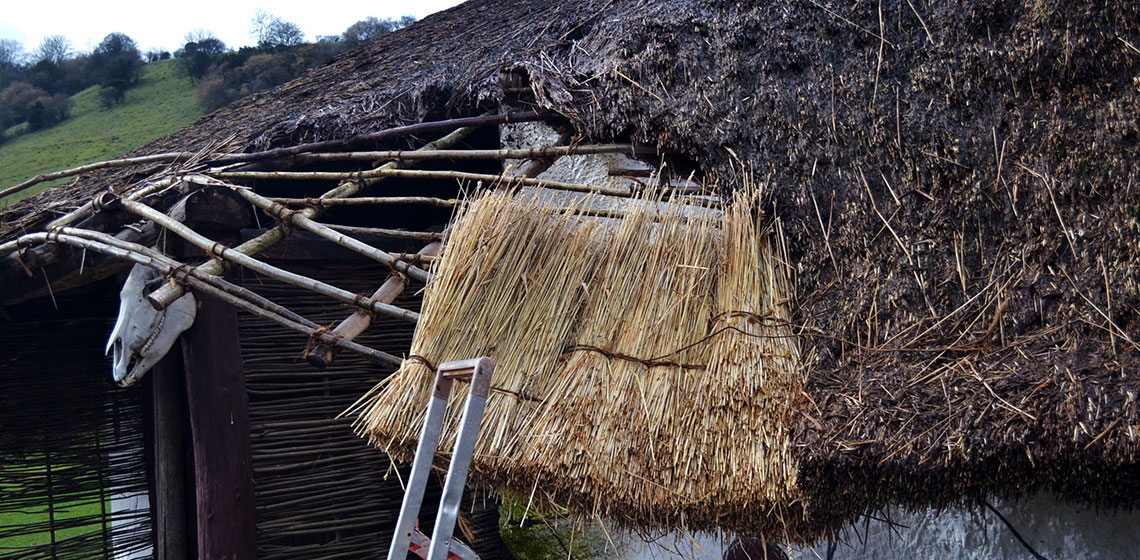construction of building
Building Rome in a Couple Days: Erecting a Painted Portico in Alésia
Publication Date
Roman construction is a recurring theme in archaeology, having been studied through many lenses: architecture, materials, urbanism, ornamentation, economics, religion, and so forth. Nevertheless, many aspects of the building process have seldom been the focus of these analyses, especially the specific actions and craftsmen involved in the chaîne opératoire. It is the aim of the Fabri Tignuarii – the roman college of building craftsmen – to delve into the specifics of roman construction...
The Lefkandi-Toumba Building as a Timber-Framed Structure
Publication Date
The article demonstrates that the building or megaron on the Toumba hill at Lefkandi (Euboea), dating from c.950 BC, was a timber-framed structure, in contrast to the common view of it as a building with loadbearing walls. This raises the possibility that the walls, perhaps even parts of the frame and the roof, were still under construction...
RETOLD: Unlocking the potential of archaeological house reconstructions by standardizing documentation in open-air museums – experiences from the Museumsdorf Düppel in Berlin, Germany
Publication Date
The Museumsdorf Düppel – a medieval archaeological open-air museum in Berlin – is a good example a bottom-up museum project from the 1970’s. The idea to create an open-air museum was born after the excavation of a medieval settlement had brought to light several house features, wells and objects ranging from pottery sherds to iron artefacts, in south-western Berlin...
(De)constructing the Mesolithic. A History of Hut Reconstructions in the Netherlands
Publication Date
11th EAC Trento 2019
***The amount of reconstructions of huts from the Mesolithic period all over Northern Europe has boomed over the last 5 years, signaling a significant increase in scholarly interest. However, the scientific basis of these experimental reconstructions is often unclear. At the same time, the excavation and preliminary publication of two recently discovered Mesolithic huts in the Netherlands indicate structures of a completely different build than the proposed reconstructions...
***The amount of reconstructions of huts from the Mesolithic period all over Northern Europe has boomed over the last 5 years, signaling a significant increase in scholarly interest. However, the scientific basis of these experimental reconstructions is often unclear. At the same time, the excavation and preliminary publication of two recently discovered Mesolithic huts in the Netherlands indicate structures of a completely different build than the proposed reconstructions...
Going Underground: An Experimental Archaeological Investigation of an Early Medieval Irish Souterrain
Publication Date
During the summer of 2018 I completed a master’s degree in experimental archaeology and material culture at University College Dublin, this research was carried out for the final dissertation. The project was to build and test a 1:1 model of an early medieval Irish souterrain. The subterranean structure is based on one of over 3,500 examples of this feature identified in Ireland...
The Effect of Climate Change in Experimental Archaeology
Publication Date
When you are planning your experiment how many of you think of the climate and whether it matches the period that your experiment is based in? Depending on the type of experiment there are many factors that may influence the results. You need to consider parameters such as; humidity, ambient temperature...
The Construction of a Bronze Age Longhouse Model in Dwelling-byre Style using Experimental Archaeological Techniques
Publication Date
Longhouses built using earth-fast post technique belong to the most important and most successful house types of middle European prehistory. The footprints of these structures, in various styles, are identifiable from the very beginning of the Neolithic period up to the Middle Ages, and sometimes up to early modern times...
The Experimental Building of a Wooden Watchtower in the Carolingian Southern Frontier
Publication Date
10th EAC Leiden 2017
***During fifteen days of June 2015, the team of l’Esquerda worked in a research project to build a Carolingian wooden watchtower on the River Ter, in Roda de Ter, Catalonia, Spain. The idea was to test our hypotheses experimentally, (a) if the wooden watchtower could...
***During fifteen days of June 2015, the team of l’Esquerda worked in a research project to build a Carolingian wooden watchtower on the River Ter, in Roda de Ter, Catalonia, Spain. The idea was to test our hypotheses experimentally, (a) if the wooden watchtower could...
Book Review: Proceedings of the 25th Meeting of Archaeologists from Germany, the Czech Republic and Austria
Publication Date
On the 17th – 20th June 2015 40 participants of the 25th Archaeological working group East Bavaria/ West and south Bohemia/ Upper Austria, were hosted by the Upper Palatinate town Bärnau which lies on the border with the Czech Republic. The meeting took place in the conference hall of the Historic Park Bärnau-Tachov, a remarkable archaeological open-air museum which demonstrates...
Castrum Corcagiensis - Roman Experimental Archaeology in Ireland
Publication Date
Barrack blocks were a central feature in any Roman fort and functioned as the living spaces for a Century and its officers. While Roman forts varied in size from just over an acre for a simple ‘numerius’ fort, to over 55 acers for some large ‘legionary’ forts such as Deva (Chester), the layout of a barrack block...










